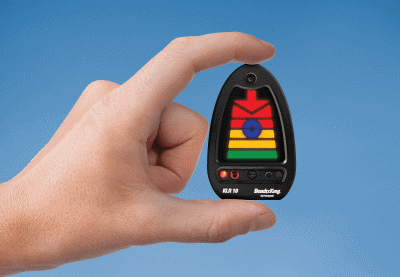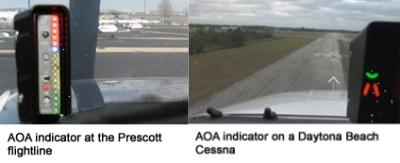Thu, Feb 06, 2014
Measure Could Improve Safety In Thousands Of Airplanes
The FAA on Wednesday today took an important step to help improve safety in small aircraft by simplifying design approval requirements for a cockpit instrument called an angle of attack (AOA) indicator. AOA devices, common on military and large civil aircraft, can be added to small planes to supplement airspeed indicators and stall warning systems, alerting pilots of a low airspeed condition before a dangerous aerodynamic stall occurs, especially during takeoff and landing.

“Safety is our top priority, and with today’s announcement we are improving safety by streamlining regulations and cutting red tape – a win-win situation,” said U.S. Department of Transportation Secretary Anthony Foxx.
An “angle of attack” is the angle between a plane’s wing and the oncoming air. If the angle of attack becomes too great, the wing can stall and lose lift. If a pilot fails to recognize and correct the situation, a stall could lead to loss of control of the aircraft and an abrupt loss of altitude. Stalls can happen during any phase of flight, but they are critical when planes are near the ground and have less room to recover, such as during landing and takeoff.
AOA indicators may help prevent loss of control in small aircraft because they provide a more reliable indication of airflow over the wing. Although they have been available for some time, the effort and cost associated with gaining installation approval has limited their use in general aviation. The streamlined requirements are expected to lead to greater use of the devices and increased safety in general aviation.
“We have eliminated major barriers so pilots can add another valuable cockpit aid for safety,” said FAA Administrator Michael Huerta. “These indicators provide precise information to the pilot, and could help many avoid needless accidents.”

Under the new policy, manufacturers must build the AOA indicator system according to standards from the American Society for Testing and Materials (ATSM) and apply for FAA approval for the design via a letter certifying that the equipment meets ATSM standards and was produced under required quality systems. The FAA’s Chicago Aircraft Certification Office will process all applications to ensure consistent interpretation of the policy.
The FAA believes this streamlined policy may serve as a prototype for production approval and installation of other add-on aircraft systems in the future.
More News
The Industry Continues to be Rocked By Some Questionable Operations Recent investigations and a great deal of data has resulted in ANN’s SportPlane Resource Guide’s rep>[...]
Make Sure You NEVER Miss A New Story From Aero-News Network Do you ever feel like you never see posts from a certain person or page on Facebook or Instagram? Here’s how you c>[...]
Visual Approach Slope Indicator (VASI) An airport lighting facility providing vertical visual approach slope guidance to aircraft during approach to landing by radiating a directio>[...]
Airport Marking Aids Markings used on runway and taxiway surfaces to identify a specific runway, a runway threshold, a centerline, a hold line, etc. A runway should be marked in ac>[...]
Aero Linx: The Skyhawk Association The Skyhawk Association is a non-profit organization founded by former Skyhawk Pilots which is open to anyone with an affinity for the A-4 Skyhaw>[...]
 Unfortunate... ANN/SportPlane Resource Guide Adds To Cautionary Advisories
Unfortunate... ANN/SportPlane Resource Guide Adds To Cautionary Advisories ANN FAQ: Turn On Post Notifications
ANN FAQ: Turn On Post Notifications ANN's Daily Aero-Term (04.29.24): Visual Approach Slope Indicator (VASI)
ANN's Daily Aero-Term (04.29.24): Visual Approach Slope Indicator (VASI) ANN's Daily Aero-Term (04.28.24): Airport Marking Aids
ANN's Daily Aero-Term (04.28.24): Airport Marking Aids ANN's Daily Aero-Linx (04.28.24)
ANN's Daily Aero-Linx (04.28.24)




